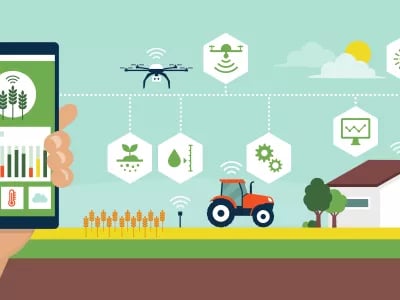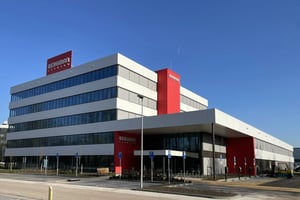Worldwide, almost a third of all food is wasted. New studies show that this is due to various reasons and that there is no ‘quick fix’. It is clear, however, that making the food chain more transparent and ensuring traceability by means of IoT technology could offer a significant contribution towards solving the problem.
Most people associate the words ‘food waste’ with throwing good food in the bin because too much has been bought, the shelf life has been exceeded, or a lack of understanding regarding how to safely keep leftovers. Every year, tons of fruit, vegetables and dairy products end up in the bins of (Western) consumers. Every year, hotels, conference centres and hospitality outlets are responsible for an immense quantity of wasted food because it is often difficult to harmonise supply and demand. And then there are the supermarkets, who offer spoilt consumers an excessive range of items. This leads to 12% of fresh fruit and 10% of fresh vegetables being wasted every year.
However, food waste on a global scale is a much broader and more complex problem. It also encompasses the enormous amount of food lost during harvests, storage and the transport of (fresh) foods or, in other words, upstream in the food chain. According to a recent study from the World Economic Forum (WEF), conducted by McKinsey, inefficiencies in the food chain are, in fact, the most important reasons for food wastage. These inefficiencies occur throughout the chain, ‘‘but knowing where exactly the problems arise is not typically known,” writes the WEF. In short, there is insufficient data available to identify a particular bottleneck in the food chain.
Optimum storage temperature
In a previous study (Innovation with a Purpose: The role of technology innovation in accelerating food systems transformation, 2018) the WEF investigated twelve technologies that could lead to improvements and increasing sustainability in our food systems. This ‘Transformative Twelve’, according to the WEF, includes sensors which can measure deterioration at an early stage, and IoT technology. According to the authors of the study, IoT networks could provide greater transparency in the supply chain and, in combination with food sensor technologies, could be developed to provide real-time, end-to-end traceability.
According to Californian consultant Kevin Payne, these types of technology are also ideal for combatting food wastage because they provide insights into ‘exactly where the problems arise’ so that solutions can then be sought. Payne writes that a great deal of food becomes unusable due to bad temperature management in the first 24 hours after harvest. By equipping every pallet with an IoT sensor straight after harvest, the storage and transport of food could be more effectively monitored and the optimum storage temperature could be checked. Payne estimates that this could lead to a 50% reduction in food waste.
Data is critical
The McKinsey study also mentioned IoT technology as having huge potential as a driver for tackling food waste. “Capturing the data in a cost-effective, autonomous and reliable way is a critical component of getting the complete picture of what’s going on along the supply chain from harvest to processing to distribution to retail,” explain the authors. Because there are so many different causes of food waste - from a lack of knowledge among farmers in developing countries to a temporary shortage of cool cells and from insect damage to unexpected loss of demand - data is vital for clarifying, understanding and ultimately eliminating these causes. As an example, Payne mentions the fact that harvested vegetables sometimes lie for hours in the fields before being placed in cool storage. This has a huge impact on the ultimate shelf-life (generally speaking: every hour without cooling reduces overall shelf-life by one day).
Reducing food waste by 50% by 2030 is one of the United Nations’ Sustainable Development Goals. The agricultural ministers for the European Union have taken on this goal and are elaborating national measures. That is all well and good, however, but the genuine gains will not come from ‘re-educating’ the consumer (don’t buy more than you need, prepare smaller portions, and so on) and addressing supermarkets and the hospitality industry. The real gains will be realised by increasing transparency and traceability throughout the food chain and by using the generated data to tackle unnecessary food waste.
Read also ‘Even circular agriculture can’t exist without mechanisation’
Read also ‘Improved crops could potentially double worldwide agricultural output’
Read also ‘The Netherlands helps feed tomorrow’s world’













